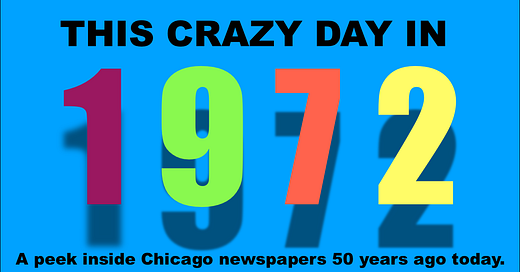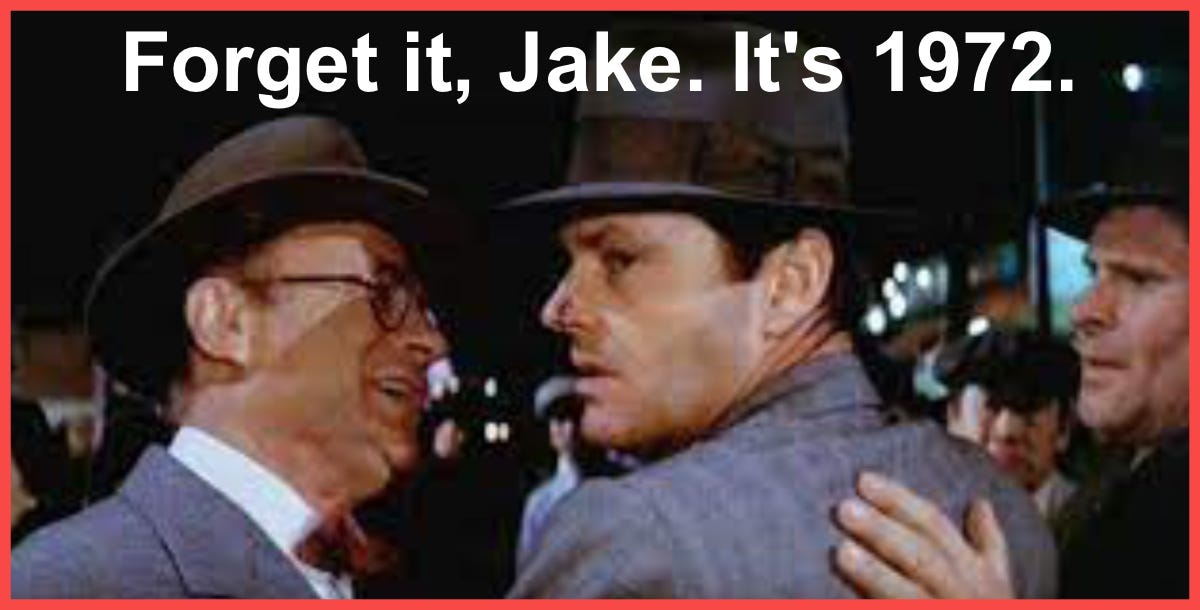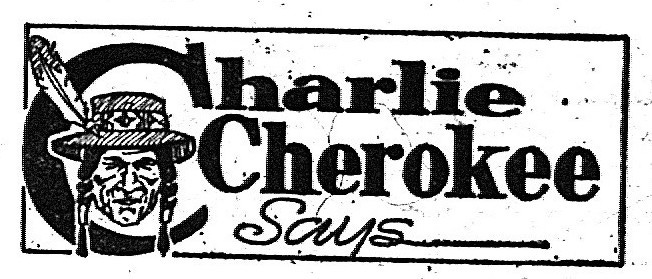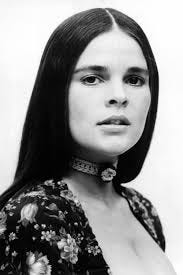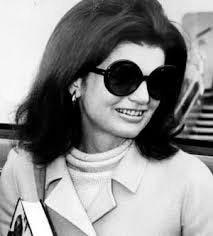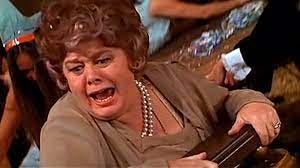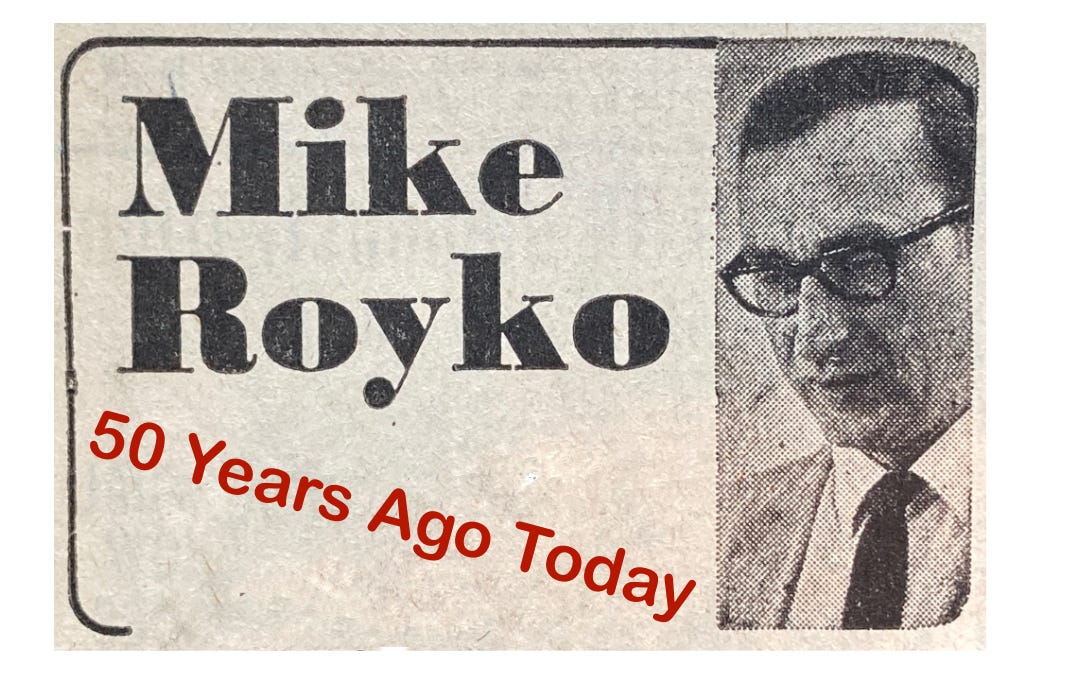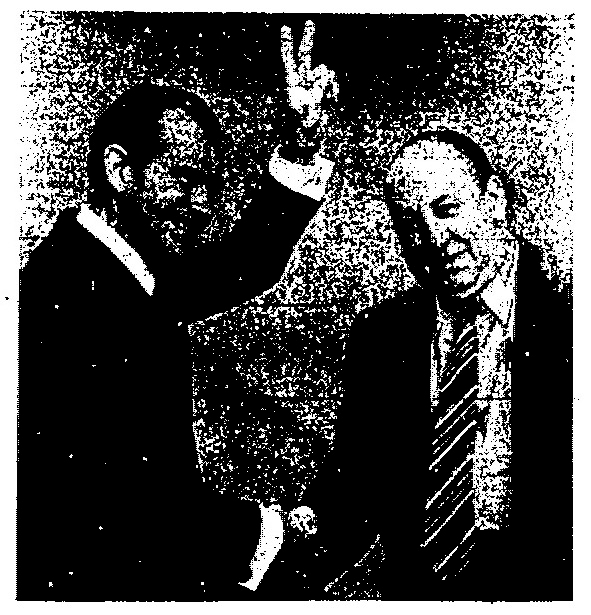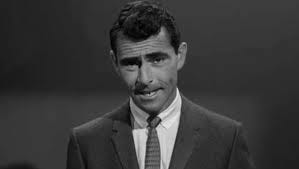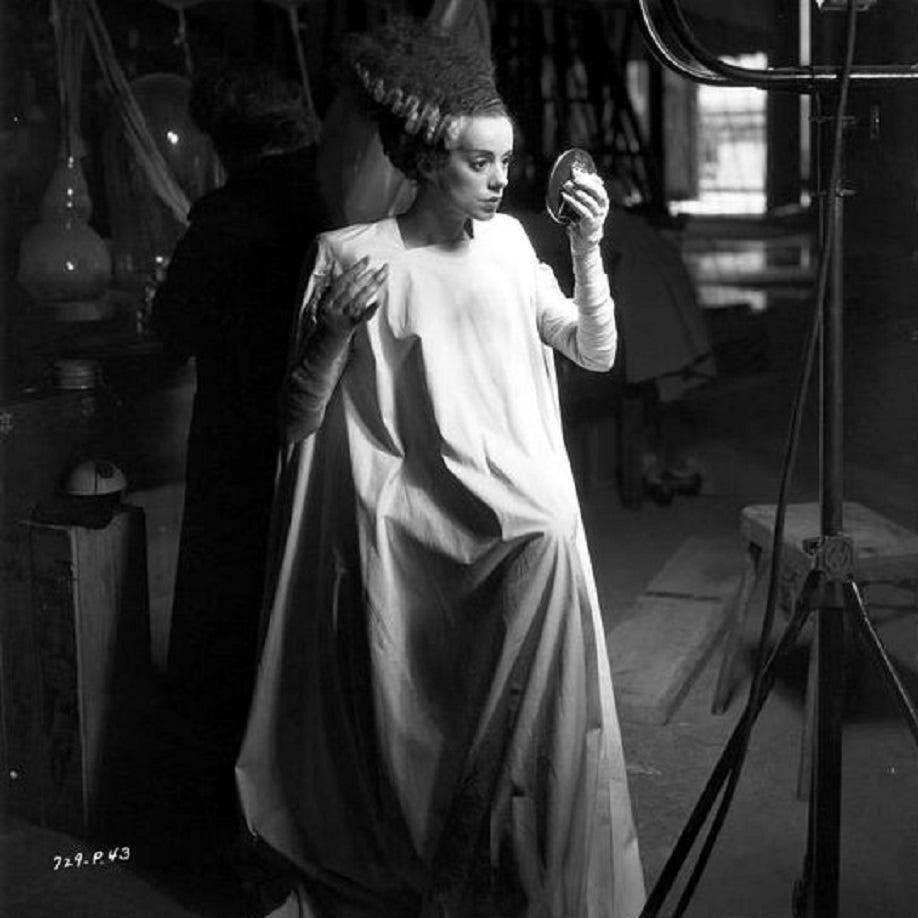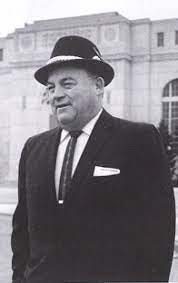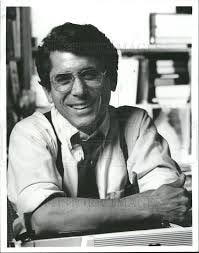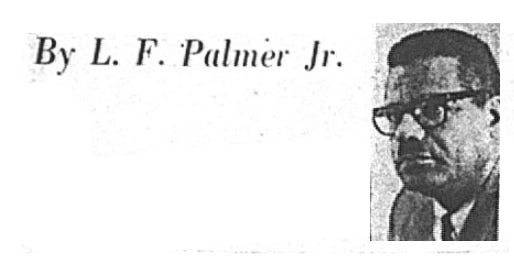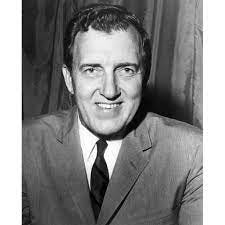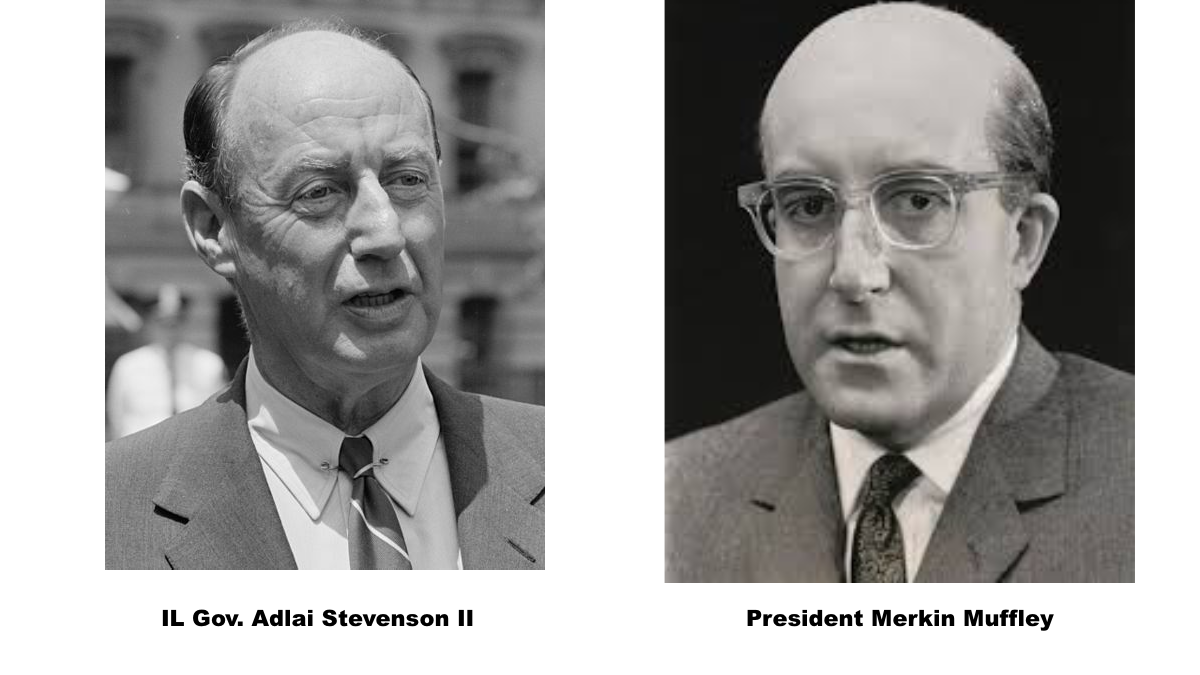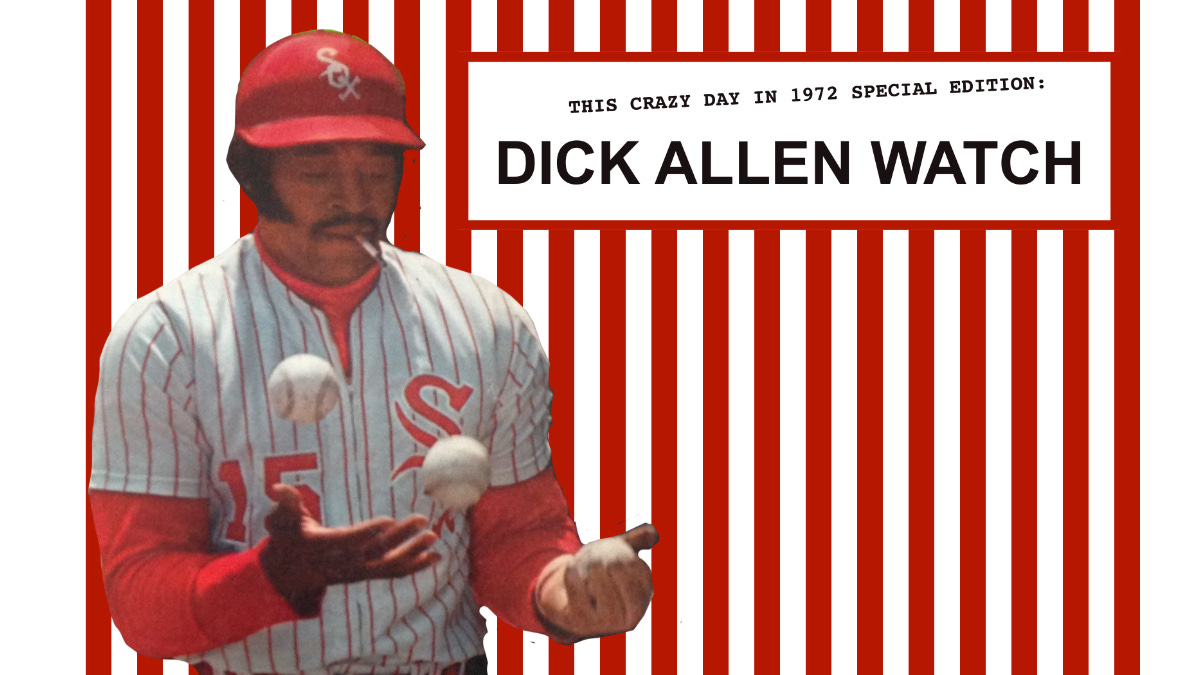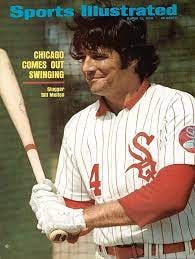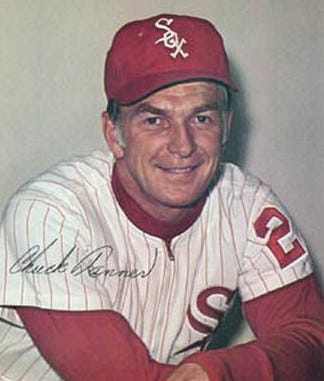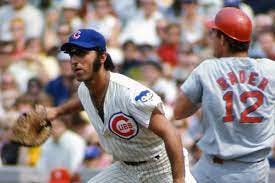THIS CRAZY DAY IN 1972: Mayor Daley meets President Nixon
Weekly compilation January 3-9, 1972
To access all site contents, click HERE.
Why do we run this separate item peeking into newspapers from 1972? Because 1972 was part of the ancient times when everybody read a paper. Everybody, everybody, everybody. Even kids. So Steve Bertolucci, the 10-year-old hero of the novel serialized at this Substack, read the paper too—sometimes just to have something to do. These are some of the stories he read. If you’d like, keep up with the 1972 papers every day on Twitter, @RoselandChi1972.
January 3, 1972
Chicago Daily News: CHA plan demanded by judge
By Ed Kandlik
U.S. District Judge Richard B. Austin, Mayor Daley’s nemesis due to the ACLU lawsuit against the CHA over public housing, issues a new order in the ongoing case.
Yesterday, Judge Austin “ordered the Chicago Housing Authority to submit plans to build 8,500 units of public housing in Chicago without obtaining City Council approval.”
“Austin also indicated he may order…HUD…to finance construction of the units, again without City Council approval. A state law required the City Council to approve public housing sites.”
The ACLU’s suit against the CHA “charged that both the CHA and (HUD) have been engaged in ‘footdragging over approving sites for public housing in white neighborhoods.’”
So far, City Council has only approved 288 of 1,500 units that Judge Austin previously ordered built in white neighborhoods. In court yesterday, Judge Austin “said that the CHA had been ‘pretty cute’ in stalling the ACLU’s” lawsuit by filing an appeal “that you knew had no merit.”
“Ninety-five per cent of public housing is occupied by blacks,” the city’s attorney told Judge Austin. “To go down [the ACLU’s] path will not result in one house being built, but will bog you down in years of litigation.”
January 4, 1972
Chicago Daily Defender: Charlie Cherokee says
Yes, the Defender ran a political/society column titled “Charlie Cherokee Says,” starting in the ‘40s. It’s 1972, Jake.
BTW, Charlie Cherokee is usually a great read. Today’s advice to cab drivers is no exception.
But first: “Charlie Cherokee Says” was started in the ‘40s by Alfred E. Smith, best known now for being part of FDR’s “Black Cabinet.” After graduating from Howard University and also earning a master’s degree in history there, Smith joined the federal government as Assistant to the Director of Negro Works in the Federal Emergency Relief Administration.
Smith went on to work in other parts of the federal government, and simultaneously wrote the Cherokee Charlie column for the Defender among other journalistic endeavors. He founded DC’s Capital Press Club, now the “oldest African-American communications association in the nation” according to its website.
Smith’s papers are at the University of Arkansas Libraries, and his correspondence includes luminaries like Langston Hughes. He retired from government in 1974 and died in 1986.
Technically Smith could physically still be writing Cherokee Charlie in 1972, but clearly it is a locally-written column, so it’s been passed on to someone else. I’ve yet to find someone who can tell me who wrote the column in this era.
Back to today’s column.
“Gov. Richard Ogilvie made a big thing in 1971 about finding taxicab jobs for persons on welfare,” writes “Charlie” today. “It was mostly talk but a few brothers did get jobs. For the new drivers there is a new book just published by a black cab driver in Washington who has 28 years of experience.
“The author is Victor E. Holt and his book is titled ‘What Every Taxicab Driver Should Know.’ He warns new drivers not to pay any attention to those militants who say they don’t ride in ‘whitey’s cab unless in extreme emergency.’ Holt says ‘they talk black but ride white.’”
“Holt also has some advice on the subject of women. He writes: ‘You’ll come in contact with women, young and old, who will try to bride you out of your fare by telling you that you’re cute…The older teenage girls or the ones in their early twenties will ask, if you’re an older driver, ‘Have you ever been out with a young girl like me?’ or ‘Can I sit in the front seat?’”
“’But if you’re a young male cabdriver, your older women passengers may try to feel your pulse by telling you that they dig young men better than they do older men because young men can show them a better time.’”
“’Mr. Cabdriver, you’re supposed to ignore all this baloney provided you’re out there to make money and to charge everybody, unless you have a good humanitarian reason for not doing so.’”
See full contest details HERE!
January 4, 1972
Chicago Daily Defender: the bettors’ edge
It’s too late to bet on these races, but I just love horse names and racing lingo, so here are a few from this day 50 years ago in “the bettors’ edge” column. This is quick so I’ll just post the whole clip.
January 5, 1972
Chicago Daily News: Ali and Jackie lead list of most unfashionable women
UPI
Oh goody, it’s time for Mr. Blackwell’s annual “worst dressed” list of the previous year, the evil twin of the many “best-dressed” lists that come out this time of year.
That’s Richard Blackwell, fashion designer and critic who started the list as a brilliant self-marketing move in 1960 and kept it up until his death in 2008. Nobody could resist it. You won’t either.
“’1971 was a year of total fashion garbage,’ according to Mr. Blackwell, the Don Rickles of haute couture,” writes UPI. A sampling:
“1.Ali McGraw, actress – ‘Pocahontas wearing remnants from Custer’s last stand.’”
“2. Jacqueline Onassis – ‘Kitty of the cat pack – in tom pants.’”
“7. Brigitte Bardot, French actress – ‘The Betty Boop of the bosom dolls.’”
“9. Shelley Winters, actress – ‘A stuffed frog in a tent.’”
They say celebrities began to enjoy being on this list, but somehow I doubt Shelley Winters enjoyed this one.
“10. Twiggy, beanpole British actress – ‘In a strapless gown she could sue her bust for nonsupport.’”
January 5, 1972
Chicago Daily News: Boy shot by sniper fights to walk again
by Phillip J. O’Connor
Joshua Taylor Jr., 14, shot in the back and paralyzed by a sniper from a Cabrini-Green balcony has he walked back to school after lunch on Dec. 7, has started physical therapy at Henrotin Hospital.
Joshua “keeps saying he will walk again. His mother isn’t so sure.”
Mrs. Wydell Taylor says Joshua can still only wiggle the toes on one foot. “I keep praying that he will be able to walk,” she says. “I don’t want him confined to a wheelchair for life.”
Just before Christmas, Gale Sayers visited, brought Joshua an autographed football, and told him to keep fighting. He’s received over 250 Christmas cards.
“‘He also got some Christmas presents from strangers,’ said his mother. ‘Some people from Lake Shore Dr. brought over some nice games for him. He’s still receiving letters every day.’”
Joshua is a Daily News paperboy, and the fund established by one of his customers has raised $1,191.
January 5, 1972
Chicago Daily News: Berg case dismissed by board
By William F. Mooney
Remember Mike Royko broke the story that Machine flunkies forged all the petition signatures in one day to get Mayor Daley’s candidate Judge Raymond Berg on the ballot for state’s attorney.
Mayor Daley slated Berg for Cook County State’s Atty instead of indicted incumbent Ed Hanrahan, but waited until the very day the nominating petitions were due. The IVI challenged the nominating petitions and sued to get voter signatures to compare with the petitions.
Lawyers Marshall Patner and John Tucker won that case and the IVI investigation of signatures proceeds. The Electoral Board set a hearing date for today, when Patner and Tucker told Board members they need until Jan. 14 to finish analyzing signatures.
After they asked for the extension, “The board recessed for about 90 seconds. When it returned, Chairman Paul F. Elward, an associate circuit judge, dismissed all 14 charges the IVI had filed ‘for lack of evidence.’”
“Tucker and Patner left the 20th-floor Civic Center hearing room and jumped in a cab for the Dirksen Federal Building where they sought a U.S. District Court order granting the extension.”
January 5, 1972
Chicago Daily News: ‘Missing’ cards belong to many legal voters
By Robert Signer
More hijinks at the Cook County Board of Elections! Mike Royko reported Machine flunkies spent a day forging voter signatures on petitions for Mayor Daley’s candidate for state's attorney.
Daley dumped indicted incumbent Ed Hanrahan for Judge Raymond Berg on the same day nominating petitions were due, hence the fast work by Machine hacks. The IVI sued the Elections Board for voter registration cards to compare signatures, and won. But--
IVI attorney Marshall Patner said Tuesday the Election Board didn’t cough up at least a third of the registration cards—about 6,500. Board chairman Stanley Kusper “said the cards couldn’t be found because of illegible signatures on the petitions as provided by IVI workers.”
Patner says IVI rechecked precinct polling lists and found many “missing” names spelled differently. “Patner is seeking a subpoena to force the election commissioners to recheck their files using the new spellings for the several thousand names that have now been found.”
This is a little confusing, but I think they mean the Election Board was purposely using different spellings of thousands of names and then claiming they couldn’t find those voter registration cards.
The Daily News analyzed four sheets of Berg’s nominating petitions and found “that four out of every five missing registration cards were those of legal voters. Although the election officials blamed the missing cards on ‘poor handwriting,’ the names of voters were correctly and legibly written on the sheets examined.”
“On one sheet, for which election officials failed to produce the registration cards for 10 names, 8 were previously documented as forgeries by The Daily News and. 2 involved fake addresses.”
Kusper “denied that the high percentage of forgeries indicated his workers had intentionally ‘failed’ to find registration cards for persons whose signatures were known to be defective.”
“A Daily News reporter visited the homes of all 25 persons listed on sheet No. 89 late last month, and only 2 persons said they had signed a Berg petition.”
See January 6 in this week’s compilation of MIKE ROYKO 50 YEARS AGO TODAY for Mike’s explanation of this week’s petition insanity.
January 6, 1972
Chicago Tribune: The nudies have it
By Gene Siskel
I always thought this logo made Gene Siskel look like some kind of international spy or something, and maybe that’s what he wanted. I have no idea.
Tribune movie critic Gene Siskel follows up on the Rockne movie theater in Austin, covered by Mike Royko last month on December 9 and December 15. The Rockne is a grand 1920s movie palace that started showing porn last summer.
FYI, Siskel is three years away from the road to stardom with Sun-Times critic Roger Ebert for their TV show, known by many names including Sneak Previews and At the Movies. FYR, Siskel & Ebert were so big, they were regulars on Johnny Carson’s Tonight Show.
FYR, literally everybody watched Johnny Carson’s Tonight Show at 10:30 on Ch. 5 for 30 years, 1962-1992.
An Austin community group led by Mrs. Jeanine Stump picketed the Rockne last summer, demanding family movies. Owner Arthur Erlich agreed, even lowering prices and offering $10 family weekly passes.
“Erlich and the Rockne Theater waited for the crowds,” writes Siskel. “They never showed up. After a reasonable one-month trial period, the Rockne is back to showing skin flicks. The box-office figures tell the story.”
The Rockne showed “Planet of the Apes” and “Beneath the Planet of the Apes” over the traditionally busy Christmas weekend, and grossed about $270. “On Saturday and Sunday of New Year’s weekend, the Rockne grossed approximately $2,600, playing ‘Diary of a Secret Love’ and ‘Devil’s Acre.’”
“Erlich’s noble experiment cost him, he says, $10,000…The community has spoken,” Siskel concludes.
Also, he notes, “26 swinging senior citizens took advantage of the Rockne’s $1 admission price for persons over 65. How ya gonna keep ‘em down at the rest home after they’ve seen ‘Diary of a Secret Love’ and ‘Devil’s Acre’?”
January 6, 1972
Chicago Daily News: Look! Nixon meets Daley
Wow, this is front page news!
Actually Nixon look-alike actor Richard M. Dixon (he legally changed his name) was at the WLS students to appear on Ch 7’s Bob Kennedy Show and ran into WLS cameraman Roy Hayward, who looks like Mayor Daley.
But it really did make the front page. Such is the power of Mayor Daley.
January 6, 1972
Chicago Daily News: Norman Mark column, ‘Night Gallery can be something of a fright’
Daily news TV critic Norman Mark reviews Rod Serling’s new show, Night Gallery. Would Rod submit this review for our approval? Maybe not.
“Radio is the medium best able to scare me,” Mark writes. Bottom line: Night Gallery isn't as good as radio, but it's OK. And we all know Night Gallery was not The Twilight Zone. Still, it had its moments—and Norman Mark describes a really good one he just watched:
Elsa Lanchester stars as “a lady gardener” who doesn’t want to sell her home to “an industrialist.”
“Cameron Mitchell, as the businessman, called her plot of land ‘a rinky-dink pimple on the arm of progress,’ and then hired a thug who cut off Miss Lanchester’s finger. She planted it and grew herself after her death. We last saw her sweetly telling Mitchell: ‘Everything I plant grows, even me.’”
That line “rinky-dink pimple on the arm of progres” tips you off that Rod Serling wrote the episode.
Mark thinks Cameron Mitchell overacted, but admits they probably don't teach you how to act when a little old lady sprouts out of the ground.
At the column’s end, Norman Mark describes a classic TV moment of the past: He missed Miracle on 34th Street the one time WGN showed it this year, because it “unfortunately was during my nap time.” Now he has to wait until next year.
BTW, I do like Elsa Lanchester very much, but I didn’t know her name until I looked her up for this. And after posting on Twitter, I discovered that Elsa Lanchester will soon have a biography. She has two Twitter accounts devoted to her—@ElsaBiog and @misslanchester.
You probably remember her for roles like Katie Nana in Mary Poppins, and will be surprised to learn she put the Bride in Bride of Frankenstein. The description of the @misslanchester Twitter account: “An unuuusual under appreciated talent. Lived in shadows of husbands Frankenstein & Charles Laughton. Offstage her droll humor eviscerated Old Hollywood's facade”. The Twitter accounts are quite interesting.
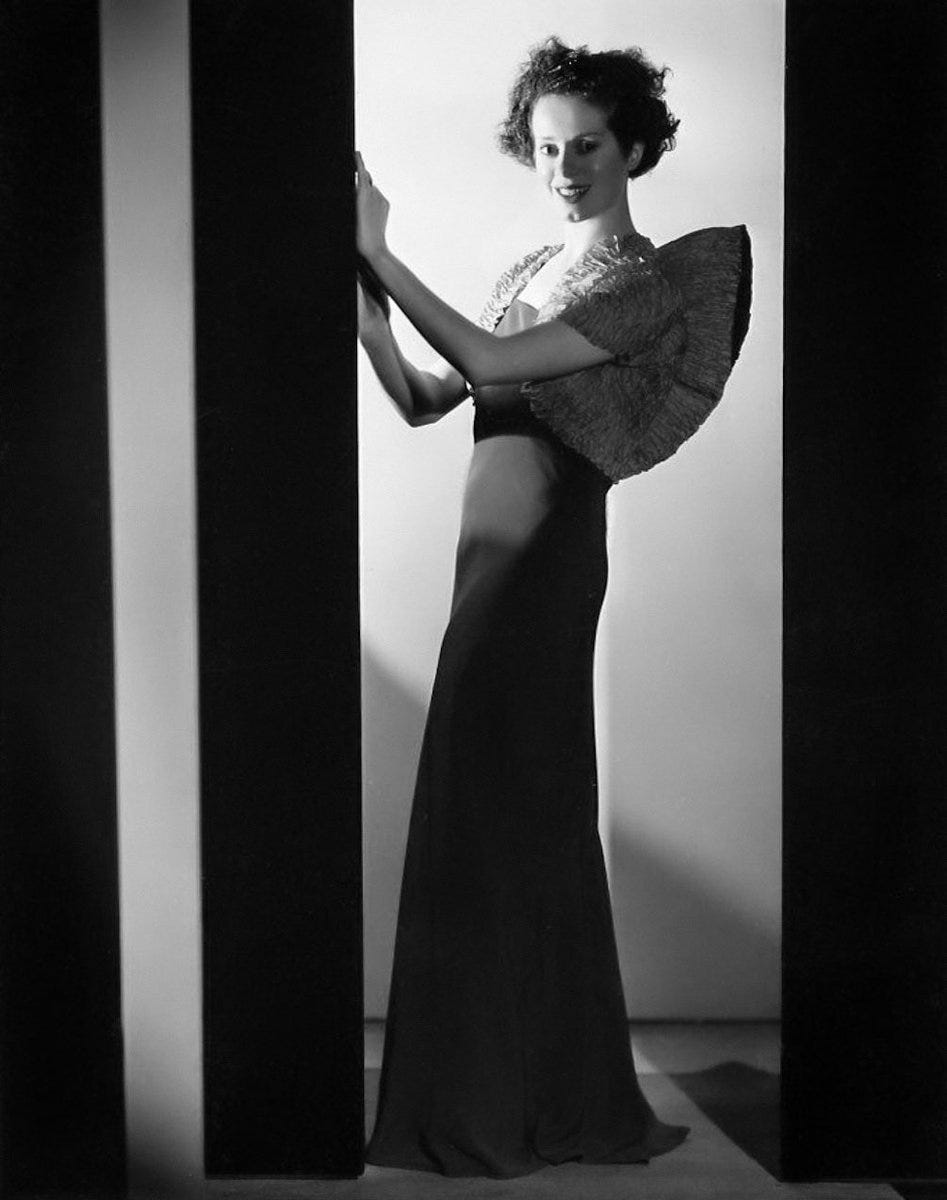
January 6, 1972
Chicago Tribune: Sound off, Sports Fans
Wait for it, Dick Allen fans—today’s letters are all about football, mostly telling George Halas who to hire to replace recently fired coach Jim Dooley. But your hero will make an appearance.
“CHICAGO – Mr. Halas should not have to look any farther than in our great city of Chicago for a good head coach. How about Pat Cronin of St. Rita, with back-to-back Prep Bowl victories? – DAVE S. NIES”
“CHICAGO – The Bears should try to get [Bob] Devaney. And then have him bring most of his Nebraska team along. – BILL BEDNAR”
“EVANSTON – Did Jim Dooley get fired for doing what his boss told him to do? – LIONEL CARTER”
“CHICAGO – That sudden-death situation is frightening. I can’t get over the Miami-Kansas City game: How all of a sudden everybody got scared to pass…It was dismaying to see Mr. Cool Hand Dawson all of a sudden freezing up and playing second-rate ball. The field goal should be abolished in the sudden-death situation. Make a team score a touchdown. – TONY SERRA”

“CHICAGO – If George Halas wants a good head coach, he needs to look no farther than the White Sox front office. After Stu Holcomb gets a look at Richie Allen’s behavior patterns in spring training, he will gladly volunteer for the job. – W.W.Y.”
January 7, 1972
Chicago Daily News: Time bombs found in 3 largest Chicago banks
Talk about an explosive story. “Black powder time bombs were found Friday in safe deposit box vaults in Chicago’s three largest banks.” They were all safely disarmed.
More bombs were found in 3 New York banks and 2 San Francisco banks. “FBI agents and police bomb squads searched the banks after radicals sent The Daily News and other news media letters warning about the bombs in the nine banks.”
Bombs were set at Continental Bank, 231 S. La Salle; First National Bank of Chicago, 1 First National Plaza: and Northern Trust, 50 S. La Salle. The warning letters demanded “FREE ALL POLITICAL PRISONERS” and “threatened future, more serious, bombings.”
A man calling himself Christopher C. Mohr rented the safe deposit boxes and planted the bombs. The FBI thinks it’s an alias for radicals they’ve been tracking. “The radicals include Mark W. Budd, Wiliam Ayers and Howard M Machtinger, all leaders of the militant Weatherman”.
Police said the bombs “were sophisticated and would have exploded. Each contained four batteries, a radio clock and a quantity of black powder.”
“Letters postmarked in Chicago Thursday were delivered to Daily News columnist Mike Royko, Sun-Times columnist Thomas Fitzpatrick, Chicago Today columnist Jack Mabley, NBC-TV newsman Walter Jacobson and the underground Chicago newspaper, the Seed.”
“The four-page hand-printed letters…warned that the bombs were timed to go off in ‘seven months or 217 days’” and “closed with the message: ‘FREE ALL POLITICAL PRISONERS’”. And they threatened in future to “kidnap property and offer it in exchange for the freedom of our people” by planting time bombs: “A seven-month time bomb could easily be embedded in the structure of a building under construction (e.g. the new FBI building in Washington) or under the roadbed of a highway not yet paved over.”
People must’ve been pretty upset about this, right? Scary stuff!
Not really. Like hijackings, radical bombings were so common in the early ‘70s that you forgot about it five minutes later. There were 2,500 bombings nationwide 1971-72, to give you an idea.
Of the two reporters I spoke to who worked for Chicago papers in 1972, one didn’t even remember these bombs. The other remembered because he knew the bomber—more on that later!
I’m surprised the thrill of being a Weatherman didn’t wear off more quickly for spoiled middle-class college student radicals when they weren’t scaring anybody but President Nixon. Then again, perhaps that was enough.
January 7, 1972
Chicago Daily News: The scene in vault—high drama
By William Clements
William Clements gives us a riveting minute-by-minute look at Chicago police bomb squad head Ed Neville defusing the time bomb in a First National Bank safe deposit box.
It’s one of three found in Chicago banks—three more in NYC, two in San Francisco. All were planted by a group demanding “FREE ALL POLITICAL PRISONERS” in letters sent to Mike Royko, the Sun-Times’ Tom Fitzpatrick, Chicago Today’s Jack Mabley, and Ch 5’s Walter Jacobson.
Ed Neville found the bomb aided by Robert Hoffman, a First National Bank employee:
“They swung open the 87-ton stainless steel doors to the bank’s safe deposit vault, and went looking for a time bomb,” Clements writes. “As the doors shut behind them, Neville and Hoffman walked slowly down the main aisle of the massive vault. They were surrounded by 41,853 safe deposit boxes.
“In one of them, Box No. 47440, was a time bomb…At Aisle 12, the two men turned left. They walked about 25 feet and stood before Box No. 47440….Neville inserted [the key] in the lock, and twisted it to the open position. Hoffman had the customer key to the lock. He inserted it, and turned it.
“Gingerly, the two men eased the box out of its slot and placed it on a metal cart with 4-inch rubber wheels. They attached a thin rope to the lid of the box, and carefully pushed the cart down to the main aisle, where two FBI bomb experts joined them. There, they lifted the lid. Inside was the bomb. Neville called in his defusing experts, and soon the bomb had been reduced to a collection of black powder, wire, four dry cell batteries and a clock radio.”
“Hoffman had given the police a Walgreen shopping bag. Into it the bomb experts poured the black powder…Then they walked down the aisle and out, once again, through the massive vault doors. Hoffman was waiting. ‘Nothing like this has ever happened to me in my 40 years with the bank,’ he said.
“Neville still had his hat on.”
My God, what a great closing line for a newspaper story, or anything for that matter.
January 8, 1972
Chicago Daily News: Bragging bomb ‘expert’ hunted on North Side
By Edmund J. Rooney and Phillip J. O’Connor
Chicago’s papers explode with stories about the radical bank bomber who set time bombs in safe deposit boxes at 3 big Chicago banks, plus banks in NYC and San Francisco. All the bombs were successfully defused.
The bomber sent letters to the media demanding “FREE ALL POLITICAL PRISONERS” and threatening bigger, worse bombing in the future.
The list of places/people that received letters from the bomber has expanded and now includes Mike Royko (Daily News), Tom Fitzpatrick (Sun-Times), Jack Mabley (Chicago Today), Walter Jacobson (local NBC TV news), the short-lived but remarkable Chicago Journalism Review, and “the underground newspaper Seed.”
The FBI is looking for “a young man who repeatedly discussed how to build time bombs with friends in three bars in the area of Fullerton Ave and Clark.” This guy “bragged” he could make time bombs “so they would explode months later,” as happened in the current case.
“The FBI also issued a nationwide alert Saturday for 16 leaders of the militant Weathermen…for questioning”.
The article includes a set of ten pictures of Weathermen that look like a radical yearbook. We all know what they lettered in!
The bomber opened savings accounts at all the banks under the name “Christopher Mohr” and put $1 in each one. He “apparently did this to establish identification for his subsequent rental” of the safe deposit boxes where he stashed the time bombs.
One Chicago bank official says that “Mohr” was a young man with “long hair” who rented a safe deposit box on Dec. 22, 1970, and visited it last on July 15, 1971. Oooooh, long hair! If you’ve been reading THIS CRAZY DAY for long, you know long hair is a big tip-off.
January 8-9, 1972
Chicago Daily News: ‘Bomb’ caller lands in jail
People in the ‘70s are used to bombs, but when you make a prank call threatening to bomb banks right after real time bombs were found at three banks, well, that gets the police’s attention.
Salesman Ralph Cooper, 42, of 7208 S. East End Ave was “described by police as ‘apparently inebriated’” when he called the 1972 version of 911, Police Communications. And he threatened to blow up the Exchange National Bank at 130 S. La Salle and the Hyde Bark Bank (still there!) at 1525 E. 53rd.
“While the dispatcher kept Cooper on the phone other officers traced the call, and before Cooper hung up two Grand Crossing District officers walked into his apartment”. He’ll appear today in South Chicago Court on disorderly conduct charges and for making bomb threats.
See full contest details HERE!
January 8-9, 1972
Chicago Daily News: Lu Palmer column, ‘Holiday or no, King a man of history’
Martin Luther King Jr. Day as a federal holiday was signed into law by President Ronald Reagan in 1983 and first observed three years later. In 1972, Lu Palmer clearly didn’t think that would ever happen.
“On Jan. 15 blacks throughout America will be joined by other minority groups and some whites in memorial services for Dr. Martin Luther King Jr,” he writes. “These memorial services will come after almost four years of effort to bring official recognition to the birthday of Dr. King. He gave his life, literally and figuratively, trying to make this country live up to its democratic dream.”
Even though there’s no official holiday yet, Palmer writes, “Black groups, regardless of political or ideological position, insist that Jan. 15 should become a day of national memory and honor in the same manner as the birthdays of George Washington and Abraham Lincoln are recognized.”
“No other American leader—placed in true historic context—related more to the professed American ideal than did Dr. King, who paid the price for his gift to this country on a motel balcony in Memphis on April 4, 1968.”
“It is likely that the nature of Dr. King’s fight will prohibit America from proclaiming Jan. 15 a national holiday. The symbolism of such a commemoration may be too much for a country rock-ribbed in racism. But for those who are wedded to the true American dream, it does not take an official holiday to celebrate the true meaning of Dr. King.”
January 8-9, 1972
Chicago Daily News: Adlai, Daley fuel Muskie bandwagon
By Charles Nicodemus
It’s hard to believe, but there was a time when it was big news who the mayor of Chicago would back for president—because it actually mattered.
Daily News political editor Charles Nicodemus reads the Daley tea leaves on Sen. Edmund Muskie’s nascent 1972 presidential campaign. Illinois Senator Adlai Stevenson “prepared to vault aboard” the Muskie campaign bandwagon “and Mayor Richard Daley put one foot on the running board.” Guess which one is more important?
The evidence for a potential Daley endorsement is “glowing praise” from the mayor during a City Hall press conference, “without any specific prompting” from reporters. Plus, Daley “usually is more restrained in his comments this early in the presidential derby.”
“Daley’s comments—which stopped barely short of an open endorsement—along with Stevenson’s formal support—appeared likely to have considerable impact on both parts of Illinois’ March 21 presidential primary.”
Do you understand what Nicodemus is telling us? JUST THE POSSIBILITY THAT MAYOR DALEY MIGHT ENDORSE MUSKIE IS GOING TO IMPACT BOTH THE DEMOCRATIC AND REPUBLICAN PRIMARIES.
“It appears likely that unless Daley comes out with some later, more specific pre-primary endorsement—which is not expected—his organization’s thousands of workers will assume he wants them to push for Muskie”.
There’s a weird thing going on this year with electing convention delegates. Daley’s Machine is “informally” putting together slates of theoretically uncommitted delegates. “That will give the mayor a minimum block of some 56 delegates to bargain with at the convention,” writes Nicodemus.
But: “the Daley forces cannot formally propose or endorse these slates, because the Democratic Party’s new convention rules provide that party officials who are not elected in the same calendar year as the convention cannot play a central role in the delegate-selection process. And no Chicago party officials have as yet been elected in 1972.”
Independent Democrats have been warning for weeks now that if the Machine puts forth uncommitted slates of delegates, they will be tainted, and the independents will challenge them at the convention in Miami Beach.
Cue the suspenseful music.
Fun fact: Peter Sellers based his portrayal of President Merkin Muffley on Sen. Adlai Stevenson III’s father, Illinois Gov. Adlai Stevenson II, because Muffley was the one guy in the movie who was supposed to a good, rational, ethical, moral character. Among other things, Gov. Stevenson was the Democratic nominee who ran against Dwight Eisenhower for president in 1952 and 1956. He also has an expressway named after him.
Another week in which it made sense to reference both The President’s Analyst and Dr. Strangelove—what more can you ask for?
January 8-9, 1972
Chicago Daily News: Look out there, Illinois Bell
You’re not the only phone company in town—in fact, you’re only one of 62 in the state
By Robert W. Billings
The Daily News runs a daily in-depth study of various topics under the column name “Insight.” Today, Billings gives us a doozy, looking at the McNabb Telephone company 100 miles southwest of Chicago.
Recently we told Younger Readers about brilliant 1967 movie The President’s Analyst, in which the diabolical hegemony of The Phone Company lurked in the background of the hilarious spy parody starring James Coburn. (See December 22 here.) Crazy as it was, the movie’s plot was based on reality—the Bell Telephone company and its affiliates controlled nearly all U.S. phones.
So the headline is a joke. The rural McNabb phone company is one of 62 independent (non-Bell) phone companies in Illinois, together controlling just 20% of the market. There were about 200 independent Illinois companies in 1960, and 20,000 independents countrywide in 1900 when Alexander Graham Bell’s patents ran out. Now Bell controls most of the country, and that other 80% of Illinois phones.
Besides the obvious impetus of capitalism, the independent companies gradually consolidated and got gobbled up by Bell because it wasn’t very useful to only have phones that could call other phones in your own town and nowhere else.
“People found it necessary, literally, to have as many different phones and lines as they had out-of-town friends,” writes Billings. I, for one, did not know that.
Now, Illinois Bell “like a benevolent Cyclops, operates in almost all of the heavily populated urban areas” of Illinois and “leaves the rural business to the shrinking independents.”
Billings looks at the little McNabb Telephone company in McNabb, Illinois. Ruddy-faced farmer Leonard Wolf bought a $30 share of the company in 1951 and that got him on the board of directors, and soon enough he was president of the company. The town started the company 71 years ago. They spent $150 to string an iron phone wire between themselves and 3 neighboring towns, “and installed 12 phones at four locations.”
In 1951, an ice storm knocked down the whole system. “’At that time we had party lines, about 13 to a line, and that was all the entertainment we had around here,’ said Wolf.
“‘He could tell you a lot of funny stories,’ said his wife, Josephine”.
“’Let’s just say that there are always people as willing to listen as talk. Everytime the phone rang you could hear receivers clicking all over town’” says Wolf.
Since then, McNabb Telephone has buried its cables and everybody now has their own phone—all 448 customers. Long distance, of course, goes through Bell. Prices are reasonable at $6.75/month for unlimited local calls, and profits are healthy.
President Wolf is paid $15/year, and occasionally his work does “take him away from his corn and beans and pigs and cattle.”
January 8, 1972
Chicago Tribune: News Main Dish at Sox Luncheon
By George Langford
“The White Sox, last year rediscovered the secret of generating news and yesterday proved at their annual midwinter luncheon they haven’t lost the touch,” writes Langford.
A sampling of what the Sox revealed at lunch:
*Bill Melton and Wilbur Wood have “already signed for the 1972 season for substantial raises that pushed them past the $50,000 salary range.”
Sox VP and GM Stu Holcomb went on an annual Sox barnstorming speaking bus tour of northern Illinois and hashed out contract terms with Melton and Wood on the bus.
“’I went to the back of the bus where Wood was smoking a big cigar,’ recalled Holcomb…’I hate cigars and I told Wilbur if he would put the cigar out we’d talk contract.’”
*”John Allyn, owner of the Sox, is resigning from Mayor Daley’s financial planning committee for a new stadium because Allyn does not foresee a new joint stadium being built in Chicago ‘for an extensive period of time.’”
“’I don’t think the Sox will be moving out of our park for a long time,’ Allyn replied….’All the mayor’s committee is talking about is refurbishing Soldier Field for the Bears and we certainly aren’t interested in that.’”
But Allyn announced some new features at Comiskey for 1972, “including installation of a new organ underneath the press box in the upper deck with a new sound system”.
*“That newly acquired slugging star Richie [or is it Dick?] Allen has been offered a $5,250 raise in pay bringing his salary to $110,250.”
Holcomb says “he also expects no trouble reaching terms with Allen, who he had not been able to contact altho Manager Chuck Tanner said he has had several talks with the ex-Dodger.”
“’I mailed him a contract this week with a 5 per cent raise,’ Holcomb said. ‘I think any new player with a team should be given a raise. Dick said he expected to come to Chicago this week but was delayed. He said he might come in next week, but I wanted to get the contract out.’”
January 8, 1972
Chicago Tribune: In the Wake of the News column
By David Condon
Harry Caray, Ernie Banks, Joe Pepitone and Billy Williams—what more can you ask for in 1972, besides Dick Allen?
Condon reports the goings-on at the 32nd annual Diamond Dinner, held at the Sheraton Chicago’s Grand Ballroom and hosted by still-new White Sox announcer Harry Caray, who spent 25 years with the Cardinals and one (1970) with the A’s before the Sox.
“Sportscaster Harry Caray, on lend-lease from the Pump Room, was the oratorical shepherd at the rostrum. He had the speakers up and down like high mass, or, like the White Sox bullpen,” writes Langford.
“This was a great evening for Harry, with the more than 200 guests affording him a larger audience than he has with the White Sox network. On the network, of course, you can turn off Harry and get some rock ‘n’ roll. Last night you had to go to the men’s room to escape his voice.”
“The arrival of the Cubs’ Ernie Banks, who has been wintering in Arizona, caused the usual traffic jam. There were more autograph fans around Ernie than there were judges and politicians scampering for the First National Bank vault at the first report of the big bomb threat.”
Other Cubs on hand—Leo Durocher, Fergie Jenkins and “Like man, I mean there was Joe Pepitone, who runs a bistro in the off-season and may soon be able to tend it all year long. At the head table I asked Commissioner Bowie Kuhn and Joe Cronin, American League president, if they had reservations for the midnight disturbance at Pepi’s Thing. They hadn’t. Well, who wants Pepi’s to look like it gets the overflow from the Chicago Cubs?”
“Then there was the Cub himself, Billy Williams. While Bill was visiting with the Ambassador’s Bill Malbach…a guest grabbed Williams’ place at the table. Billy reached in his pocket, pulled out $20, and bought another ticket for himself. Can’t hardly get that kind of ball players no more.”
Do you dig spending some time in 1972? If you came to THIS CRAZY DAY IN 1972 from social media, you may not know it’s part of the book being serialized here, one chapter per month: “Roseland, Chicago: 1972.” It’s the story of Steve Bertolucci, 10-year-old Roselander in 1972, and what becomes of him. Check it out here.

